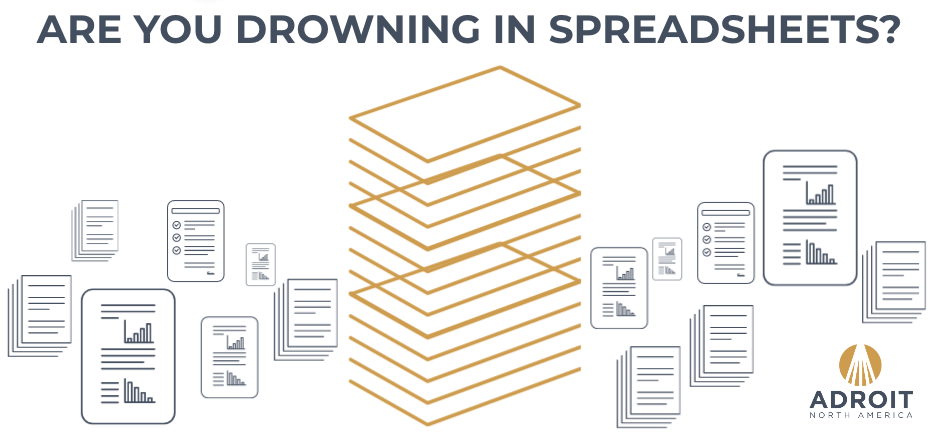Do you have an ERP system but are still planning on spreadsheets? You are not alone.
Let’s face it. Supply chain planning in the food industry is tough and getting more complicated each day. Customers continue to exert pressure in their move to fresh. Private label, locally sourced, organic and responsible farming have shifted consumer preferences away from big brands to rapidly growing mid-market players. Multichannel, Omni channel, direct to consumer, etc. have created supply chain confusion and conflict. Big box retailers are feeling the squeeze and continue to exert pressure up stream for fresher, safer, and more rapid responses. All of this leaves the planner caught in the middle trying to make sense out of it all. Despite the name “Enterprise Resource Planning,” ERP systems are not that great at planning. Even though they are great at executing plans and capturing the costs and units of transactions, when push comes to shove, planners end up drowning in spreadsheets. No, it is not a training issue.
Let’s step through the five plans that together feed the daily business execution of a food company.
The ERP system deals with SKUs (stock keeping units), aka: items at a detail level. How do you plan if you have 500 items? How do you plan for 2000 or 20,000? Now imagine those items spread across 50 states and hundreds of customers. The mathematical quantities are vast. This implies you have to deal with aggregation, in which ERP doesn’t work well. The American Production and Inventory Control Society (APICS) talks about using “planning boms.” In my work with many food processors, they were never used. As a better approach to help with the demand planning, forecast, solutions were developed. They allow forecasting in the aggregate that is then pushed to the detail, known as “top-down” forecasting, and tweaked at the detail and aggregated back up, known as “bottom-up.” Most ERPs don’t have a solid forecast engine, so an external demand solution is needed. Food expiration adds another layer to this, as some customers are pickier than others. The problem with an interfaced forecast solution is that it doesn’t integrate with the other plans.
ERP solutions expect unlimited supply of raw material. The Coronavirus pandemic certainly highlighted that fallacy. In fact, many food processors are constrained by supply. Weather, disease, and global demand are all factors. So when you don’t have enough, how do you decide whom to supply? How do you maximize margin? Who do you short? To work around this, we can mimic a forecast using “place holder po’s” and then run planning, comb through the expedites and then roughly figure out the margin impacts on individual customers. It’s not feasible. To compensate we once again end up in spreadsheets with pivots.
ERP solutions don’t do well with items that don’t exist. As new items are created, we need to plan before they are finalized to account for cannibalization, pipeline fill, raw material availability, etc. ERP doesn’t provide for a “sandbox.” Planners need to account for uncertainty and review a high, medium, and low plan. ERP solutions don’t allow for this range of plans. There is only “the” plan.
Unfortunately, spreadsheets quickly run out of gas. Formal S&OP practices are abandoned, as the environment is deemed too dynamic. When things fall apart, the next step towards order is via an integrated supply chain planning solution such as
Adroit’s Outperform Planning. Each of the five plans are integrated, allow you to deal at either the aggregated or detail level, and allow you to model unknowns and alternatives to create the optimal plan. Once defined, the plans are fed to the ERP system to allow it to do what it does best: execute. If you are a planner and have never seen a demo of an integrated supply chain planning solution, please give us a call. Yes, there is life after excel pivots and vlookups.



